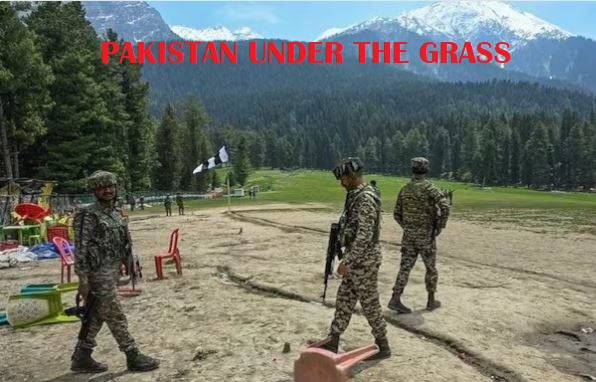

New Delhi, May 2: There was a Lashkar-ISI-Pakistan Army nexus behind the Pahalgam attack, said the National Investigation Agency (NIA),that’s probing the case of the brutal massacre involving 28 deaths in India’s Jammu & Kashmir.
NIA’s preliminary report on the April 22 terror attack in Pahalgam's Baisaran Valley points to an operational nexus between Pakistan's intelligence agency, the Inter-Services Intelligence (ISI), and the terrorist group Lashkar-e-Taiba (LeT), said sources.
According to NIA sources, the conspiracy was developed within LeT, allegedly under directives issued by senior ISI operatives.
The plan is believed to have been formalised at Lashkar's headquarters in Pakistan.
Two key terrorists who shaped the bid in Pahalgam identified as Hashmi Musa (alias Suleman) and Ali Bhai (alias Talha Bhai), are confirmed Pakistani nationals.
Interrogations of detained operatives indicated that both attackers maintained consistent communication with Pakistani-based handlers, receiving specific instructions on timing, logistics, and execution.
The terrorists allegedly entered the Indian Territory weeks before the attack and were aided by a network of Over Ground Workers (OGWs) who provided local logistical support at the crime scene including shelter, navigation, and reconnaissance.
As per the evidence, the NIA conducted extensive forensic and electronic data gathering. Over 40 cartridges recovered from the crime scene were sent for ballistic and chemical analysis.
Investigators also performed 3D mapping of the attack site and extracted dump data from mobile towers around the valley.
Regarding communication,at least three satellite phones were operational in and around the Baisaran meadows, and signals from two were traced and analysed to be involved in the attack.
In course of investigation, over 2,800 individuals were questioned by the NIA and security agencies. More, 150 persons are so far in custody for further interrogation. These include both suspected OGWs and individuals with links to banned groups like Jamaat-e-Islami and various factions of the Hurriyat Conference.
Hurricaning raids were carried out in multiple districts, including Kupwara, Pulwama, Sopore, Anantnag, and Baramulla with other susceptible places.The residences of several individuals suspected of aiding cross-border terror infrastructure were also frequently searched for substantial evidence.
Searches were conducted at the residence of Mushtaq Ahmad Zargar, alias Latrum, a key figure in the IC-814 hijack case of 1999 and currently believed to be operating from Pakistan. Zargar's Srinagar residence was previously attached under the stringent Unlawful Activities (Prevention) Act (UAPA) in 2023.
While studying the eyewitness accounts, the sleuths retrieved CCTV footage from key transit and public areas around Pahalgam to trace the attackers' movement. They are also reviewing data from security checkpoints in adjoining regions for pattern mapping.
Onlookers and eyewitnesses including families of the victims, pony operators, and food vendors, provided significant testimonies relating the attack with electronics evidence. All of them are under forensic scrutiny.
Tallying the incident with others, the NIA also established connections between the Pahalgam killings and the one at Z-Morh tunnel in Sonamarg, Ganderbal district, in which seven individuals were killed. Operatives from the same LeT-backed unit are believed to have executed both attacks.
One identified operative, Junaid Ahmed Bhatt, was neutralised in an encounter in December 2024. Another suspect, now identified as Hashim Musa is reportedly involved in both the attacks.
As per the modus operandi, the terrorists arrived in Pahalgam around April 15, a week before the attack. Detailed reconnaissance was carried out at four potential sites including Baisaran Valley, Aru Valley, Betaab Valley, and a local amusement park.
Ultimately, Baisaran was chosen due to a relatively thinner security presence at the time, and the massacre was successfully chalked out.